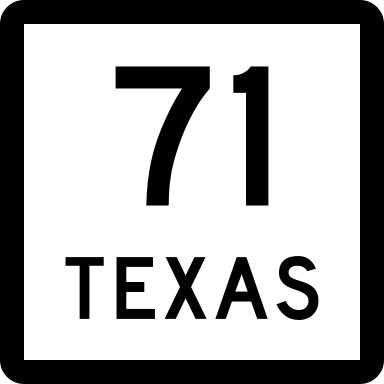But maybe not for long. Depending on which route you drive.
[T]he Texas Department of Transportation is in the final stages of a decadeslong effort to at least make that 170-mile trip from Austin to Houston free of traffic lights.
Right now, there are just five traffic signals left on Texas 71 between Interstate 35 in South Austin and I-10 in Columbus, all of them between Austin and Bastrop. And TxDOT has engineering plans and money set aside to eliminate four of those lights by adding overpasses over the next four years. The fifth one — at FM 1209 just west of Bastrop — is in the cross hairs as well, but the timing of its removal is less certain, TxDOT Austin district engineer Terry McCoy told me.
[…]
Texas 71, other than in Austin and through Bastrop’s commercial district, has no frontage roads. And it has scads of roads and private drives entering it throughout the other, more rural sections. So to turn it into interstate now would require TxDOT not only to acquire a lot of right of way for what would be a wider highway in many places, but also to pay some property owners for lost access to the road.
Or, more likely, to build many, many miles of frontage roads. Either way, the cost would be enormous. This isn’t a project that’s going to happen in the foreseeable future.
What TxDOT is doing instead — trying to eliminate traffic lights little by little — is the next best thing.
During my youth in Austin, through the mid-1970s, a trip to Houston included going through Bastrop, Smithville, La Grange and Columbus, including a few lights in each town and the odd right or left turn. The towns broke up the trip and were interesting to look at out the window, but going through them added a lot of time to the trip. By the early 1990s, TxDOT had completed loops around all those towns and few traffic lights remained east of FM 973 in Del Valle.
But little by little, as development stretched southeast of Austin, traffic lights were added first to that Bastrop bypass and then to several other spots along the way. About 15 years ago, TxDOT began to take those on, building overpasses and associated frontage lanes at several spots in Bastrop and major roads along the way like Texas 21. More recently, TxDOT installed a deep underpass on Texas 71 at Riverside Drive and a short tollway to bypass traffic signals at Texas 130’s frontage roads.
But lights remain at Ross Road and Kellam Road in Del Valle, at Tucker Hill Lane and Pope Bend Road about halfway to Bastrop, and at FM 1209.
TxDOT has set aside $48 million to build overpasses at Ross and Kellam — work set to begin as soon as fall 2019 and be done by summer 2021 — and $52.6 million for overpasses at Tucker Hill and Pope Bend. That second set of projects, TxDOT hopes, will start in fall 2020 and be done by summer 2022. All of this, TxDOT officials caution, could be delayed somewhat by environmental clearance work and acquisition of right of way.
The FM 1209 overpass, TxDOT estimates, would cost an additional $35 million. That money has not been nailed down.
McCoy, by the way, said he would like to make similar progress on U.S. 290, the northern route to Houston, but it has far more traffic signals standing in the way.
So, something like five years from now, a driver might be able to get to and from Houston on Texas 71 without hitting a red light.
So good news if you take the I-10/SH71 route between Houston and Austin, which puts you into (or takes you out of) the southern end of Austin. If you’re coming to or from the northern side via US290, hang in there. That may be a more interesting challenge, since there are traffic lights far away from both endpoints, in places like Chappell Hill and Brenham. And like SH71, the story of how US290 has evolved over time is similar. It used to wend its way through lots of small towns – I still remember a McDonald’s in Hempstead that was the best available bathroom for miles in either direction – but has now ruthlessly bypassed them all, making the drive faster and more efficient but much less scenic. We’ll see what comes of this. In the meantime, if you’re wondering why I-10 doesn’t connect Houston directly to Austin instead of San Antonio – look at a map, if you drew a more-or-less straight line from Houston to El Paso, you’d go through Austin – click over and read the answer.


This makes me nostalgic for trying to decide where to grab a meal in La Grange. The Railroad Underpass Of Death between LaGrange and Smithville, not so much.
Howabout TDOT figure out how to alleviate the clusterf**k of traffic that occurs on the weekends east of Columbus on I-10, not easing up until after you cross the Brazos River bridge ? What a colossal pain in the ass. I’ll routinely go out of my way and take 290 just to avoid that 20 mile stretch of road.
It’s in the works… there’s a handy construction tracker for every TxDoT project at http://apps.dot.state.tx.us/apps-cq/project_tracker/